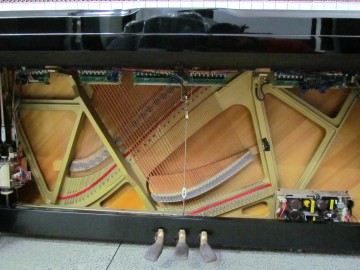By Eleanor Hoskins — Posted on Apr 28, 2015
Much of the interest in integrating relevant technology into education deals with access. Open education programs like MOOCs and video lectures help break down financial and distance barriers to learning. Mobile apps allow learning to continue outside classrooms and homes. Transcription, alternative text and other technological possibilities make educational content more accessible to people with disabilities.Now, a unique project between the University of Kansas and a rural school district is granting low-income students access to an often neglected part of learning: music education. The program pairs undergraduate music majors who want the opportunity to develop their teaching skills with students who might not otherwise have the opportunity to take piano lessons. Music education at such a distance is a particularly thorny challenge, but what makes this possible are two Yamaha Disklavier instruments, which are connected to one another through the internet.
The Disklavier is an acoustic piano with digital upgrades that allow it to play its own music, to record a pianist’s performances, and to transmit keystrokes to another instrument connected to the internet anywhere else in the world. It also has an accompanying video function that can be used to perform remotely and communicate in real time. This makes the piano a very useful tool for teaching and collaboration: lessons and workshops can happen almost as though everyone is in the same room together, viewing each other’s keystrokes and pedal movements. This eliminates the need for unmanageably long commutes for students and teachers.
As is probably to be expected, the Disklavier instruments are quite expensive. The project was subsidized by a collaboration between the Kansas University School of Music, the non-profit Band of Angels, and Yamaha. To learn more about this program and the very cool technology involved, take a look at the links involved.
Additional Resources
- The University of Kansas School of Music: New technology to provide remote piano lessons for rural elementary students
- Yamaha Canada: more information about the Disklavier
- The Yamaha Disklavier Education Network
- The Band of Angels website
